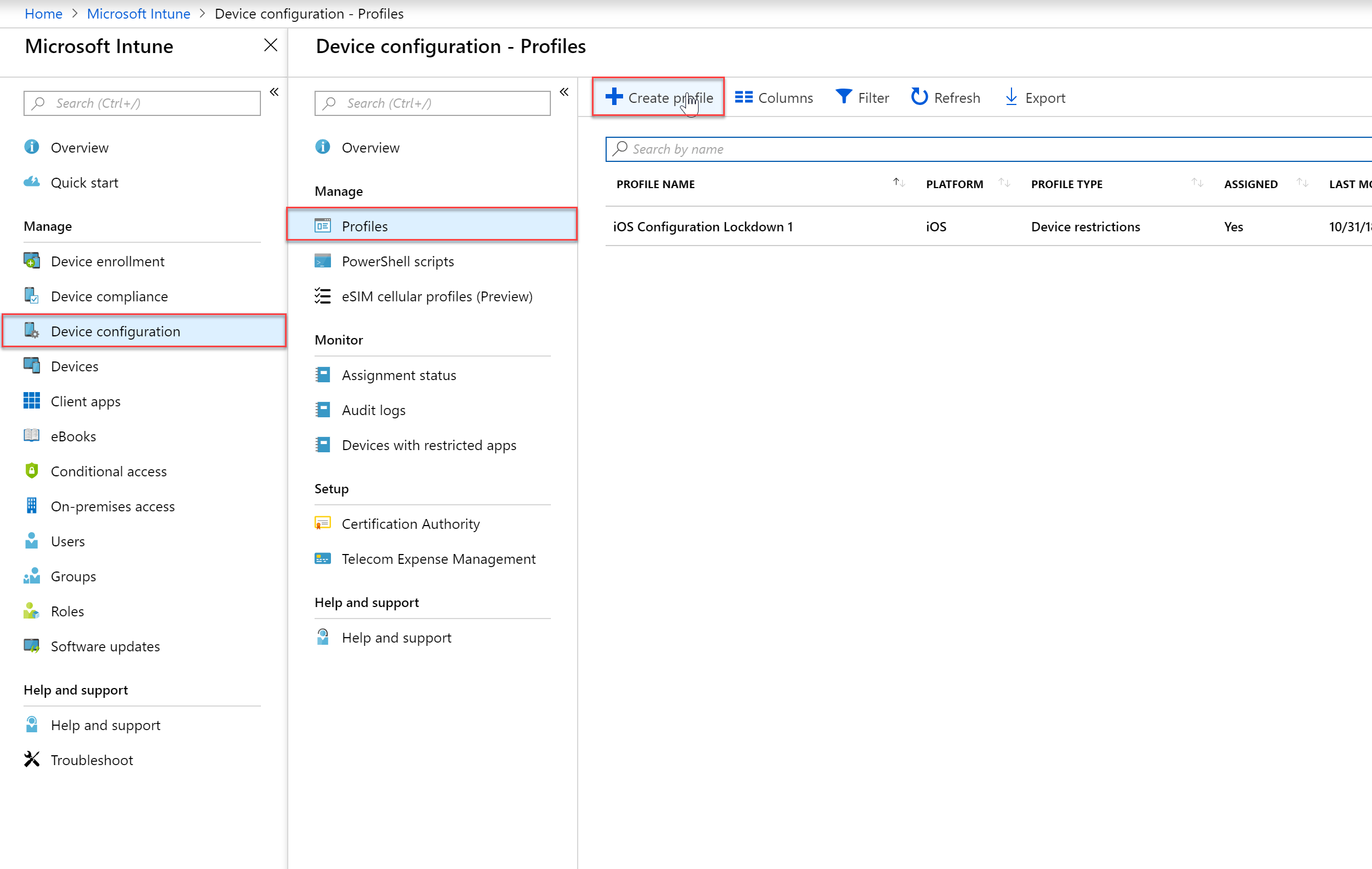
The Windows Intune is cloud service helps you centrally manage and secure your PCs through a simple web-based console. No matter if your IT staff or end user. Historically, EMMs such as Intune manually built support for OEM-specific features after they're introduced by the OEM. This approach sometimes led to duplicated efforts, delay in support for new features, and slow adoption. With OEMConfig, you get day.

Intune
Table of Contents
- Download the Firefox ADMX template from our Github page
- Sign in to Microsoft Endpoint Manager at https://endpoint.microsoft.com.
- Click Devices then Configuration Profiles (https://endpoint.microsoft.com/#blade/Microsoft_Intune_DeviceSettings/DevicesMenu/configurationProfiles).
- Click Create profile.
- Select Windows 10 and Later as the platform and Custom as the profile then click Create.
- Type Firefox Configuration or any descriptive name.
- Enter an optional description.
- Click Next.
- Click Add.
- Enter a name like Firefox ADMX.
- Enter an optional description.
- For the OMA-URI, enter ./Device/Vendor/MSFT/Policy/ConfigOperations/ADMXInstall/Firefox/Policy/FirefoxAdmx.
- Select String for the Data type.
- Copy all of the text from the firefox.admx file into the Value field.
- Click Add.
- Sign in to Microsoft Endpoint Manager at https://endpoint.microsoft.com.
- Click Devices then Configuration Profiles (https://endpoint.microsoft.com/#blade/Microsoft_Intune_DeviceSettings/DevicesMenu/configurationProfiles).
- Click on the profile you created earlier.
- In the sidebar, click Properties under Manage.
- Click Edit (next to Configuration Settings).
- Click Add.
- Enter an OMA-URI for the policy you want to change.
- Enter the value for the policy you want to change.
- Click Add.
All of the OMA-URIs and values for Firefox policies are listed at:

 -->
-->These set-up steps help you enable mobile device management (MDM) by using Intune. Devices must be managed before you can give users access to company resources or manage settings on those devices.
Some steps, such as setting up an Intune subscription and setting the MDM authority, are required for most scenarios. Other steps, such as configuring a custom domain or adding apps, are optional depending upon your company's needs.
If you're currently using Microsoft Endpoint Configuration Manager to manage computers and servers, you can cloud-attach Configuration Manager with co-management.
Tip
Itunes
If you purchase at least 150 licenses for Intune in an eligible plan, you can use the FastTrack Center Benefit. With this service, Microsoft specialists work with you to get your environment ready for Intune. See FastTrack Center Benefit for Enterprise Mobility + Security (EMS).
Intune Definition
| Steps | Status |
|---|---|
| 1 | Supported configurations - Need-to-know info before you start. This includes supported configurations and networking requirements. |
| 2 | Sign in to Intune - Sign in to your trial subscription or create a new Intune subscription. |
| 3 | Configure domain name - Set DNS registration to connect your company's domain name with Intune. This gives users a familiar domain when connecting to Intune and using resources. |
| 4 | Add users and groups - Add users and groups, or connect Active Directory to sync with Intune. Required unless your devices are 'userless' kiosk devices, for example. Groups are used to assign apps, settings, and other resources. |
| 5 | Assign licenses - Give users permission to use Intune. Each user or userless device requires an Intune license to access the service. |
| 6 | Set the MDM authority - Use user and device groups to simplify management tasks. Groups are used to assign apps, settings, and other resources. |
| 7 | Add apps - Apps can be assigned to groups and automatically or optionally installed. |
| 8 | Configure devices - Set up profiles that manage device settings. Device profiles can preconfigure settings for email, VPN, Wi-Fi, and device features. They can also restrict devices to help protect both devices and data. |
| 9 | Customize Company Portal - Customize the Intune Company Portal that users use to enroll devices and install apps. These settings appear in both the Company Portal app and the Intune Company Portal website. |
| 10 | Enable device enrollment - Enable Intune management of iOS/iPadOS, Windows, Android, and Mac devices by setting the MDM authority and enabling specific platforms. |
| 11 | Configure app policies - Supply specific settings based on app protection policies in Microsoft Intune. |
